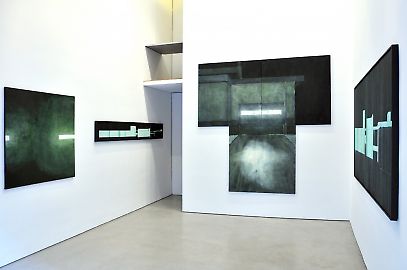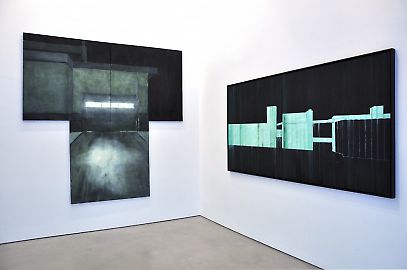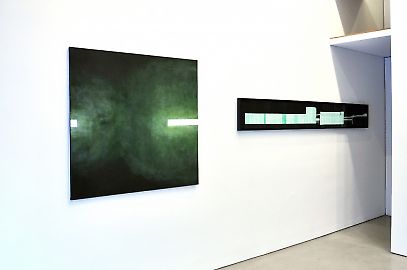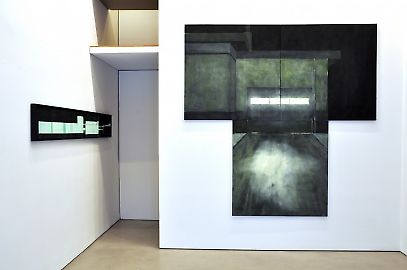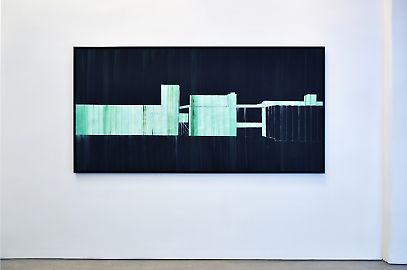Richard Zeiss -- The Speed of Light
After Richard Zeiss’ works were already on view in 2008 as part of the group show This Is Happening at Georg Kargl Fine Arts, we now present an individual show of work by the artist at Georg Kargl BOX.The artist, who lives in London, works almost exclusively in series based on a central idea or a defining motif. He usually begins with photography, film, television, the Internet, or personal impressions that he then transfers to large format and colorfully reduced canvases. As the exhibition title already indicates, speed and light play a central role in his works.
He is interested in media reporting and its influence on our perception. The status shift from analog to digital introduces a transformation in our approach to images: Paul Virilio already postulated humanity’s increasing acceleration and overstimulation by way of technologization in the early 1990s, when the Internet was still in its infancy. A change in sensory perception and consciousness has taken place: vision has become accelerated and the gaze has changed. The factors of time and speed play a key role here: due to our restless gaze, the images begin to move and plummet into time.[1] As a consequence, the images are divided into temporal sections, which are independent of space and time and ultimately lead to their dissolution.
The original starting material, the photograph from a newspaper article, a film, and brief sequences of perception of a situation, is torn from its context and becomes intermittent sensory impressions that refuse all inscription. In this way, Richard Zeiss is able to create a new space liberated from its original connotation. The disappearance becomes at the same time the condition for the appearance of something “new,” or as Virilio argues, the task of appearance continues in the aesthetic of disappearance.[2]
This state of affairs is supported by the very reduced and archaic formal language of the paintings. Richard Zeiss uses a modernist aesthetic that is reminiscent of minimalism and color field paintings in a targeted fashion to illustrate the loss of information that an image undergoes on its way through the digital world through to the screen. At the same time, this reduced practice and the intricate process of creating these paintings with self-made egg tempera contradicts the thematically as well as formally complex initial material, based on the newest technologies of creation.
In the relationship between the invisible and the visible, the light becomes the main actor in these stagings. Zeiss uses light sources as an aesthetic principle and as a means to underscore his dark scenarios that seem so uncanny. The feeling of the uncanny, according to Freud, emerges in those moments when a disturbing, fear-filled dimension emerges behind the trusted and the familiar and becomes uncanny.[3]
[1] Paul Virilio, Die Eroberung des Körpers. Vom Übermenschen zum überreizten Menschen (Vienna ,1994), 310.
[2] Paul Virilio, Ästhetik des Verschwindens, Berlin 1986, 59.
[3] Sigmund Freud, “Das Unheimliche,” Gesammelte Werke, Vol. 12, ed. Anna Freud (Frankfurt am Main, 1947), 235f.


